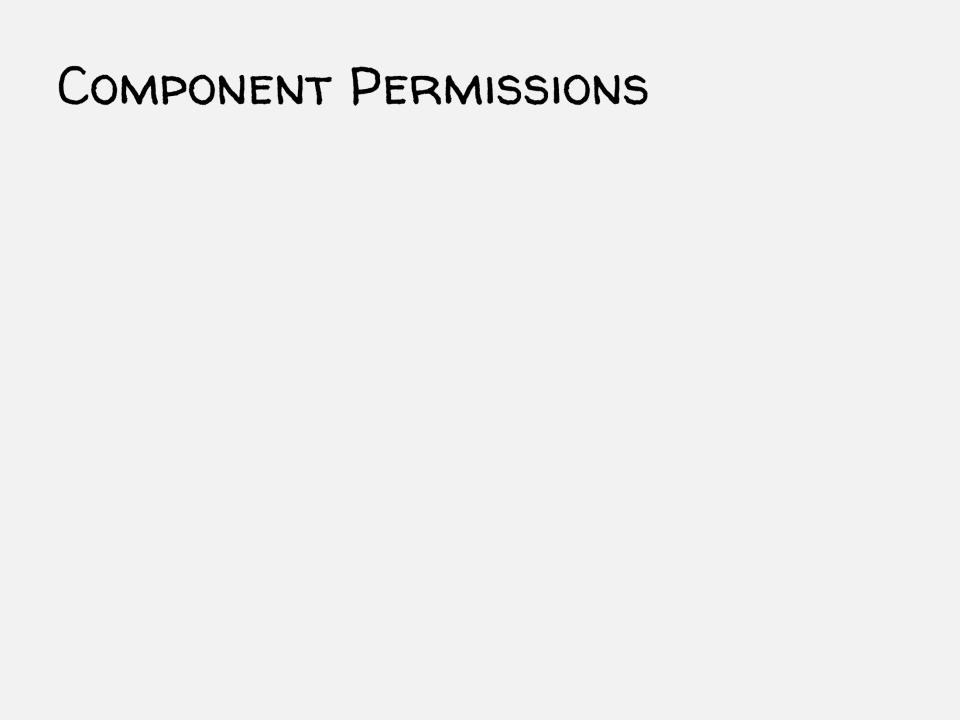
Android Lecture 3
.pdf
Android protects resources & data with permissions
Used to limit access to:
User information – e.g, contacts Cost-sensitive API’s – e.g., SMS/MMS System resources – e.g., Camera

Permissions are represented as strings
In AndroidManifest.xml, apps declare the permissions
They use themselves
They require of other components

Applications specify permissions they use through a <uses-permission> tag
Users must accept these permissions before an application can be installed

<manifest … > ! …!
<uses-permission android:name=! "android.permission.CAMERA”/>
<uses-permission android:name=! "android.permission.INTERNET”/>
<uses-permission android:name=!
“android.permission.ACCESS_FINE_LOCATION”/>
…
</manifest >
See: http://developer.android.com/reference/! android/Manifest.permission.html

Apps can also define and enforce their own permissions

Suppose your application performs a privileged/dangerous operation
You might not want to allow just any application to invoke yours
So you can define & enforce your own permission

Simple Application that performs a (just pretend) dangerous action

Individual components can set their own permissions, restricting which other components can access them
Component permissions take precedence over application-level permissions

Restricts which components can start the associated activity
Checked within execution of
startActivity()
startActivityForResult()
Throws SecurityException on permissions failure

Restricts which components can start or bind to the associated service
Checked within execution of
Context.startService()
Context.stopService()
Context.bindService()
Throws SecurityException on permissions failure
